World-first monitor lizard eradication program aims to protect endangered turtles nesting on Micronesian island
feel good
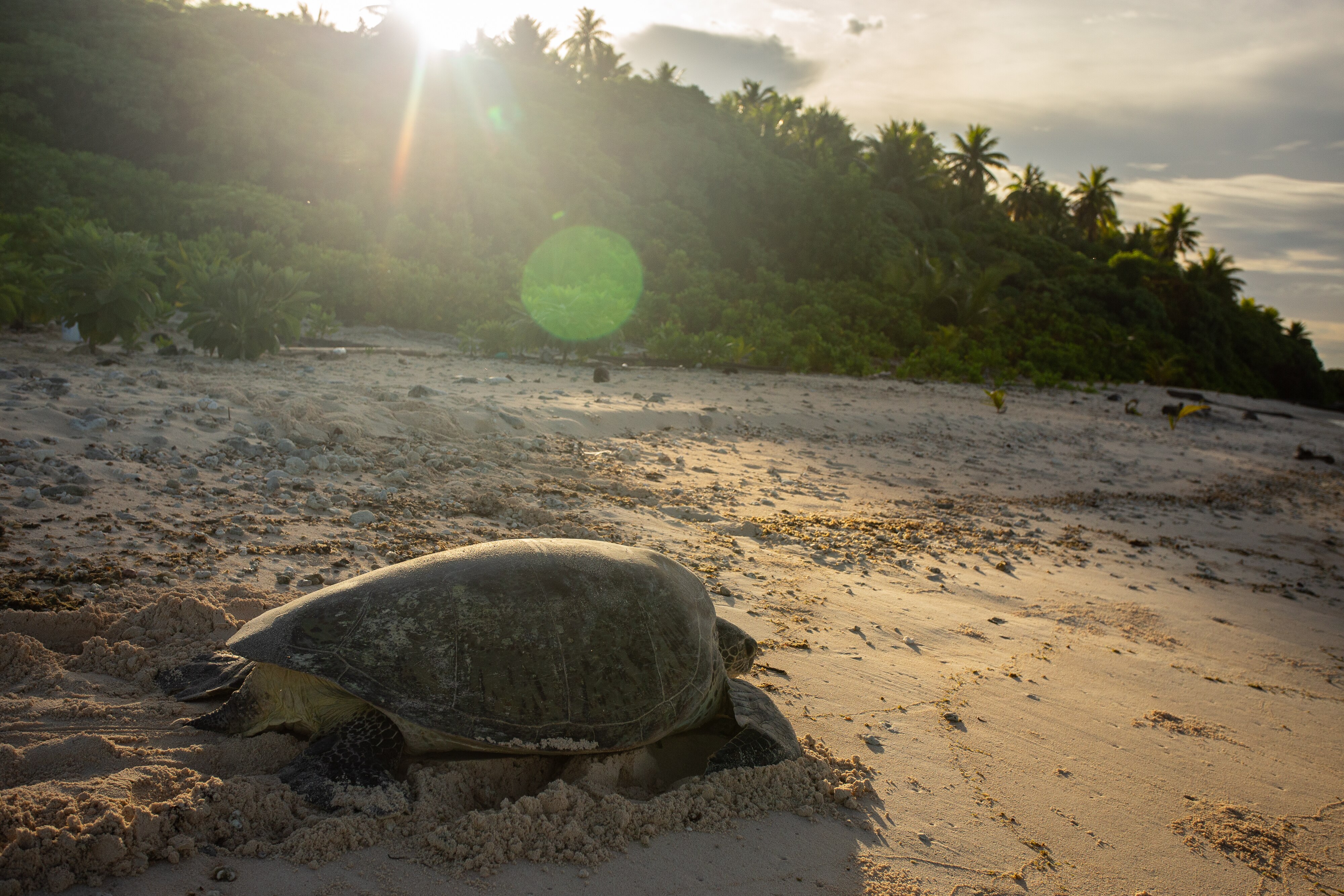
Hundreds of turtles lay eggs on Loosiep island in Ulithi atoll each year.
In short:
Endangered green sea turtles lay eggs on Loosiep island in the Federated States of Micronesia, but nests have been heavily predated on by pigs, rats and lizards.
A community-led project aims to protect the turtles and increase local farming output by completely eliminating invasive pests on the island.
What's next?
In what may be a world first, the project is tackling monitor lizards, with early eradication efforts already killing most individuals.
Loosiep island is an isolated speck of land on the edge of the deepest trenches of the Pacific Ocean.
Despite its small size — less than 800 metres at its widest point — Loosiep is a crucial refuge for endangered green sea turtles (Chelonia mydas).
It's one of five uninhabited "Turtle Islands" in Ulithi atoll that, together, form one of the most important rookeries in the Federated States of Micronesia.
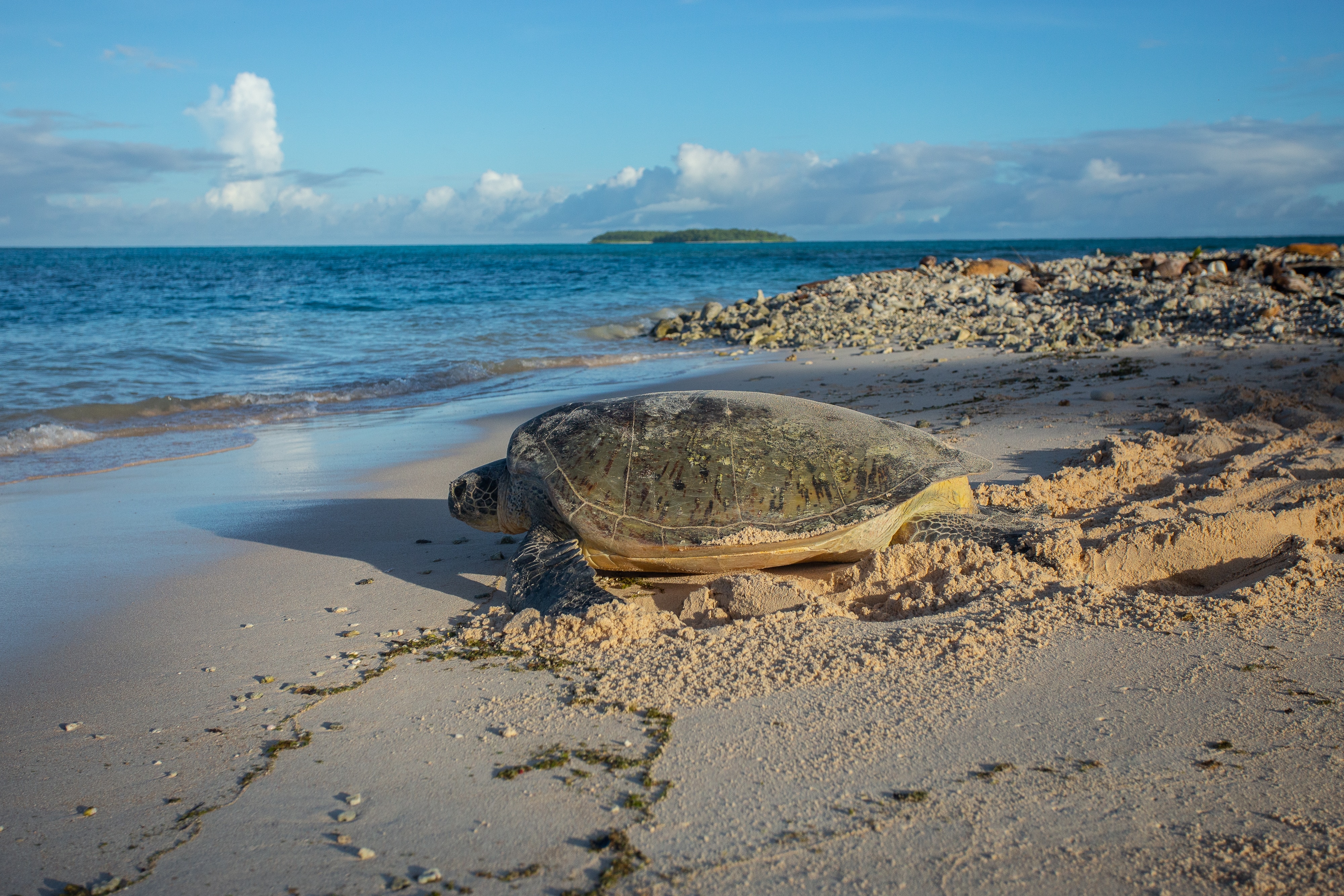
Turtles lay their eggs in shallow nests along the sandy beaches of Loosiep.
But unlike the other islands in this cluster, the diminutive Loosiep had a massive pest problem.
For decades, rats, pigs, and monitor lizards have wreaked havoc on native species, including nesting turtles.
So the traditional owners of Ulithi atoll and international collaborators hatched a plan to fight back, which included a world-first attempt to eradicate monitor lizards from the island.
A move that scientists previously urged caution on.
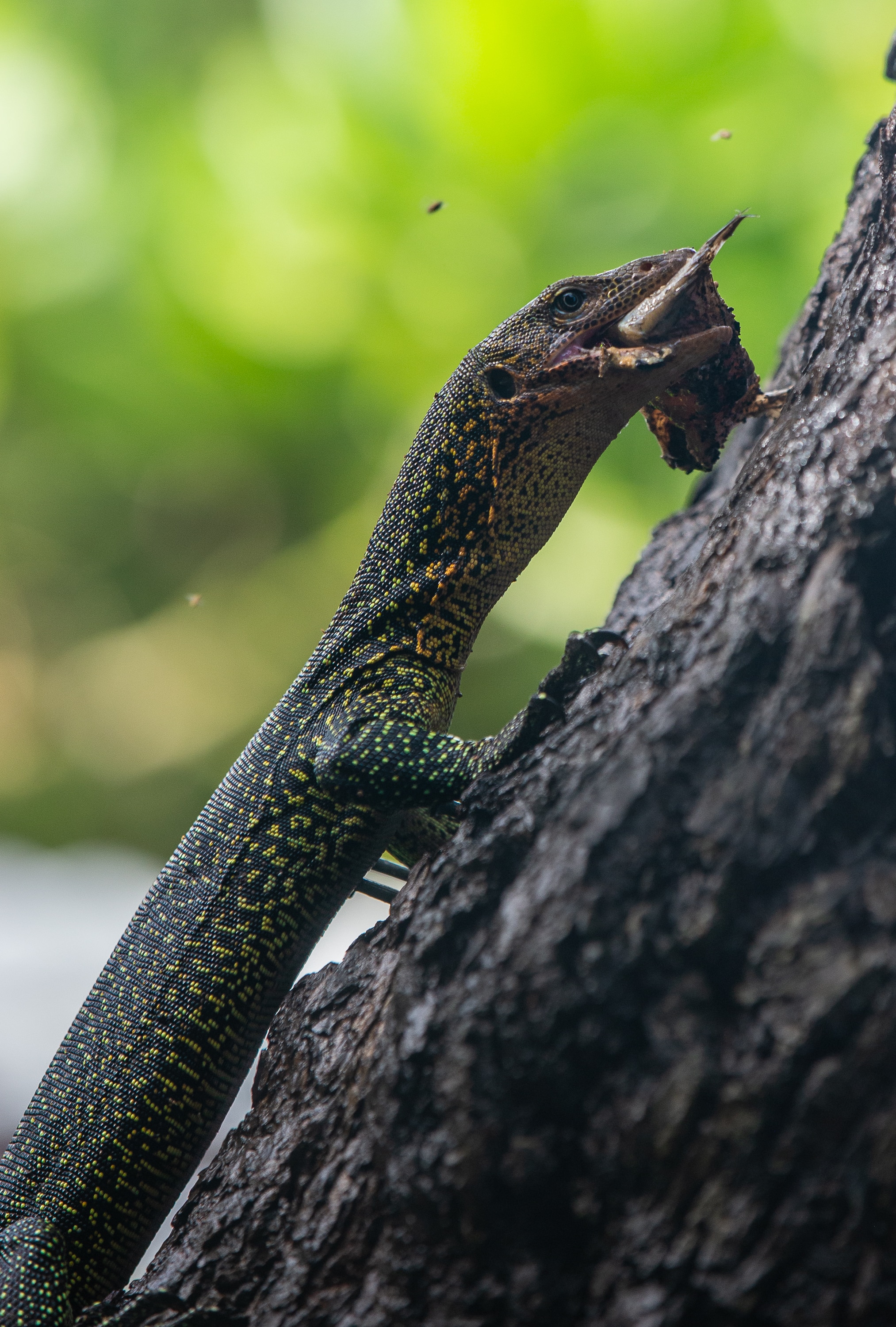
Monitor lizards will prey on species on the forest floor and, sometimes, those living in trees.
Pests on a grand scale
Wedged between Japan, the Philippines, and Papua New Guinea, Ulithi atoll's isolation helped protect the thousands of turtles that nest on it.
But Loosiep island in particular has been far from a perfect refuge among Ulithi's Turtle Islands, with introduced species also flourishing unchecked.
"The biodiversity was really limited on that island compared to the others," says Jennifer Cruce Horeg, principal investigator for the Ulithi Marine Turtle Program and PhD student at the University of the Sunshine Coast.
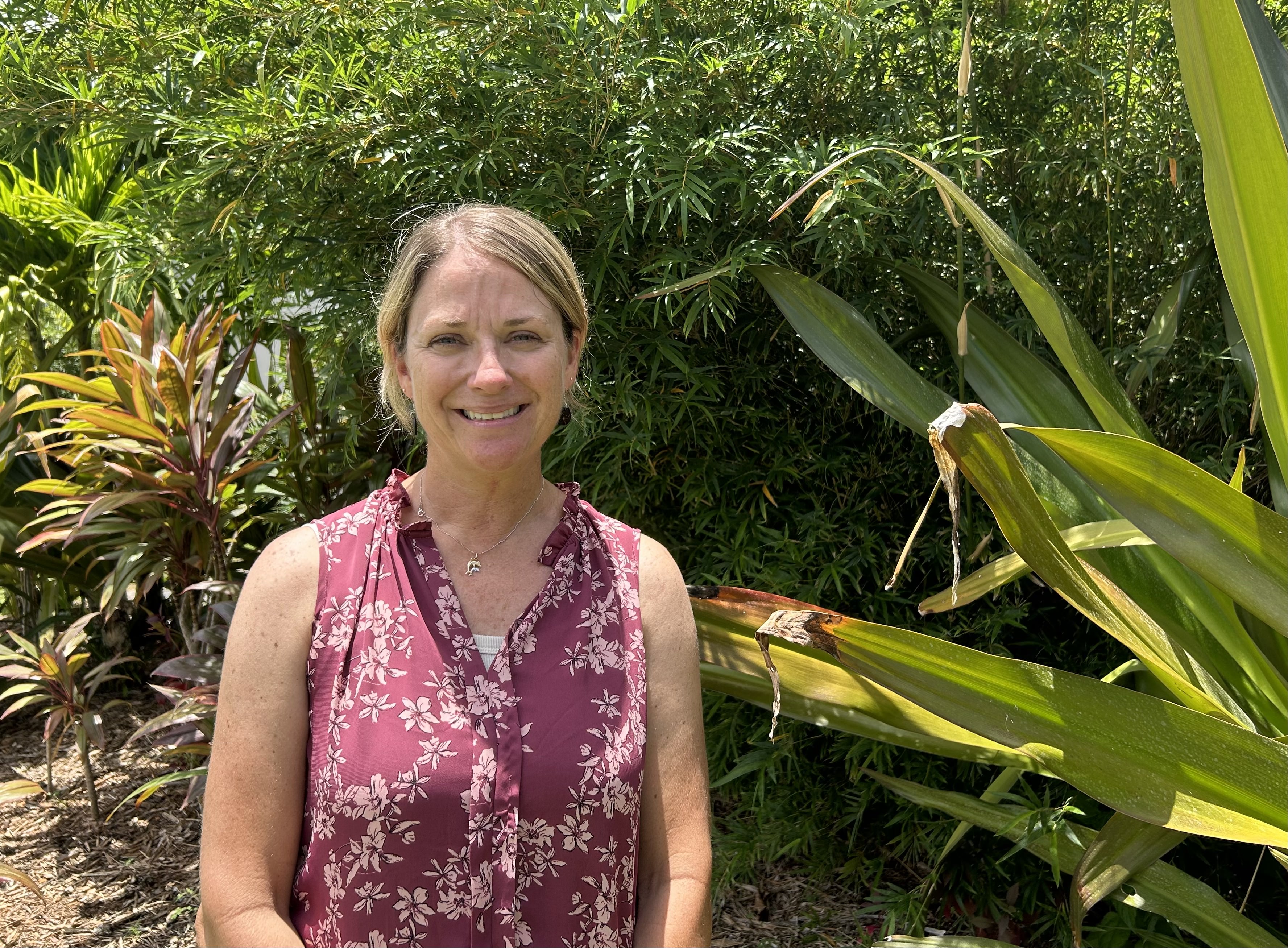
Jennifer Horeg heads up the the Ulithi Marine Turtle Program and has been monitoring nesting sea turtles on the atoll for 20-odd years.
She's monitored turtles on Loosiep and other islands across the West Pacific since 2005, tagging thousands of them as they come ashore at night.
Satellite data she and colleagues collected shows turtles travel across the whole region, from Japan to Malaysia, but return to these Turtle Islands to lay eggs.
Including Loosiep, where egg-eaters live.
On a field trip to the island in 2008, she counted that 23 out of 28 green sea turtle nests were excavated by monitor lizards and their contents devoured.
Pigs running wild also dug up nests, and at night, rats would emerge under the cover of darkness and eat anything left on the ground.
This relentless pest predation was devastating local turtle populations on Loosiep.
Threats to local community
It wasn't just turtle populations being threatened by these pests: vital food that the people of Ulithi atoll rely on was at stake too.
The remote atoll has limited space for crops and few opportunities to import food.
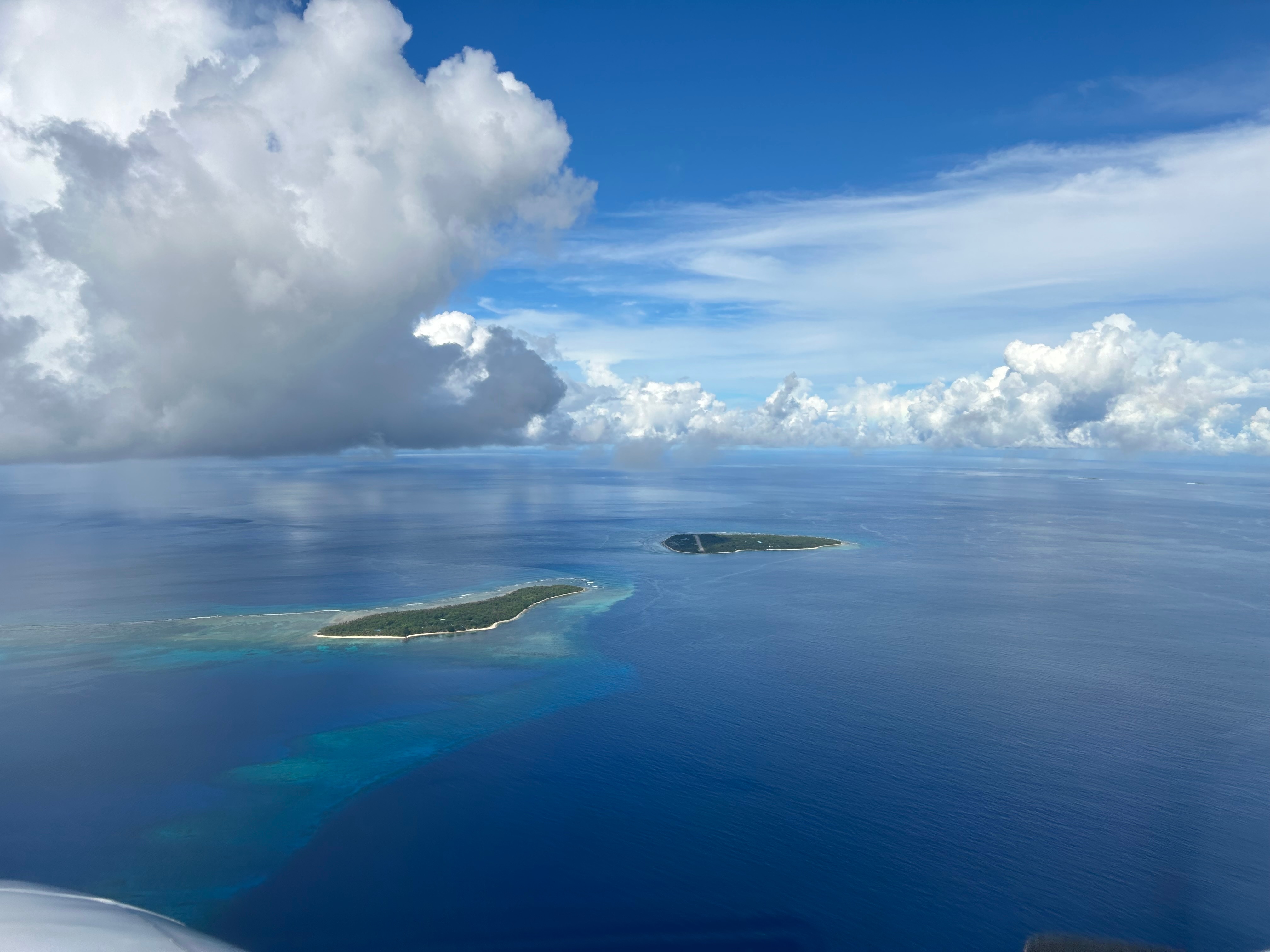
Ulithi atoll is a string of a few dozen islands on the edge of the Mariana Trench.
This means the 700 to 1,000 people of Ulithi need islands like Loosiep to grow fruit and vegetables.
"We had breadfruit and wild apples there," Chief Pedrus, an Elder from the island of Falalop in Ulithi, says.
"The rats destroyed them."
Ulithians also traditionally harvest turtles and their eggs.
Many First Nations peoples eat turtles. For example, in Australia, they can be legally hunted by Aboriginal and Torres Strait Islander people under provisions in the Native Title Act 1993.
John "Magul" Rulmal Jr is a Ulithian and project supervisor for the Ulithi Marine Turtle Program.

John "Magul" Rulmal Jr is one of the Ulithian community members helping lead this project.
He says Ulithi's traditional turtle egg harvesting takes place early in the laying season when hatchling survivability is at its lowest.
"Those early turtles have the lowest survival rate of their eggs," he says.
"This taboo-based culture is rooted in management and science."
Ms Horeg says her work on the islands backs this up.
"There were so many turtles nesting [early in the season] that you would see turtles just throwing up other eggs, hatchlings flying through the air.
"So it really made sense to harvest then."
John Ugulmar, a descendant of traditional Loosiep people, says turtle harvesting is heavily regulated through traditional rituals, and restrictions on harvesting outside allotted times are strongly enforced.
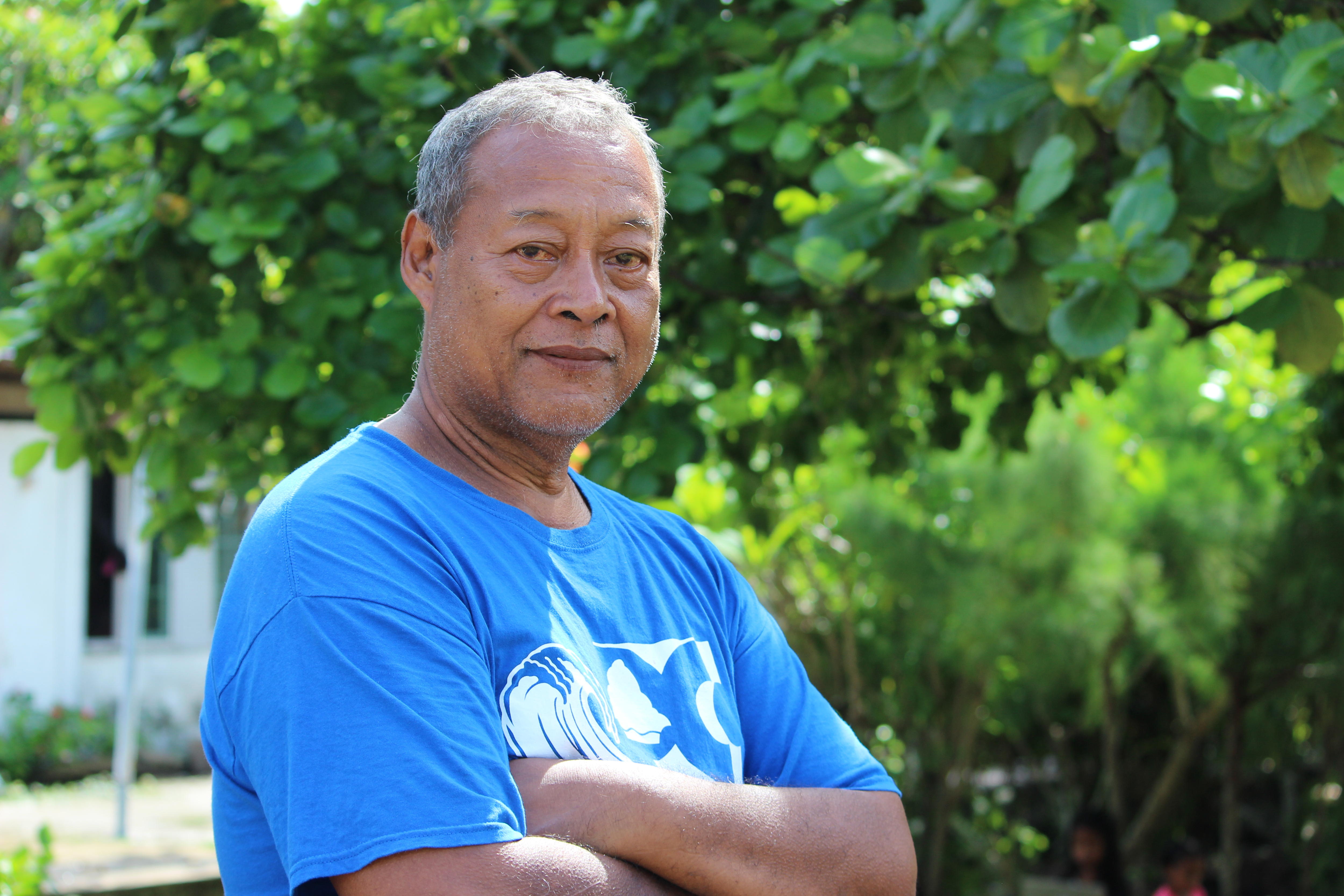
John Ugulmar is a descendant of traditional Loosiep people.
"If you get caught you're in trouble.
"And not only you, but the entire island."
Tackling pests
So, in a massive multi-year project with invited scientists from non-profits One People One Reef and Island Conservation, in 2020 the community set out to remove introduced species from Loosiep.

The project was logistically very challenging, given the island is uninhabited and team members needed to bring their own supplies.
"The first one was pigs," Tommy Hall, a project manager at Island Conservation, says.
Working with community members and using motion-sensing field cameras, he says they caught and transported the pigs elsewhere to be kept as livestock.
To wipe out rats, community members dropped targeted poison baits across the island.
The poison was only dangerous to mammals, and rats were the only mammals living on Loosiep.
Earlier this year, camera traps, baited traps and tunnel tracking, which are used to detect signs of rats, showed no signs of them on the island.
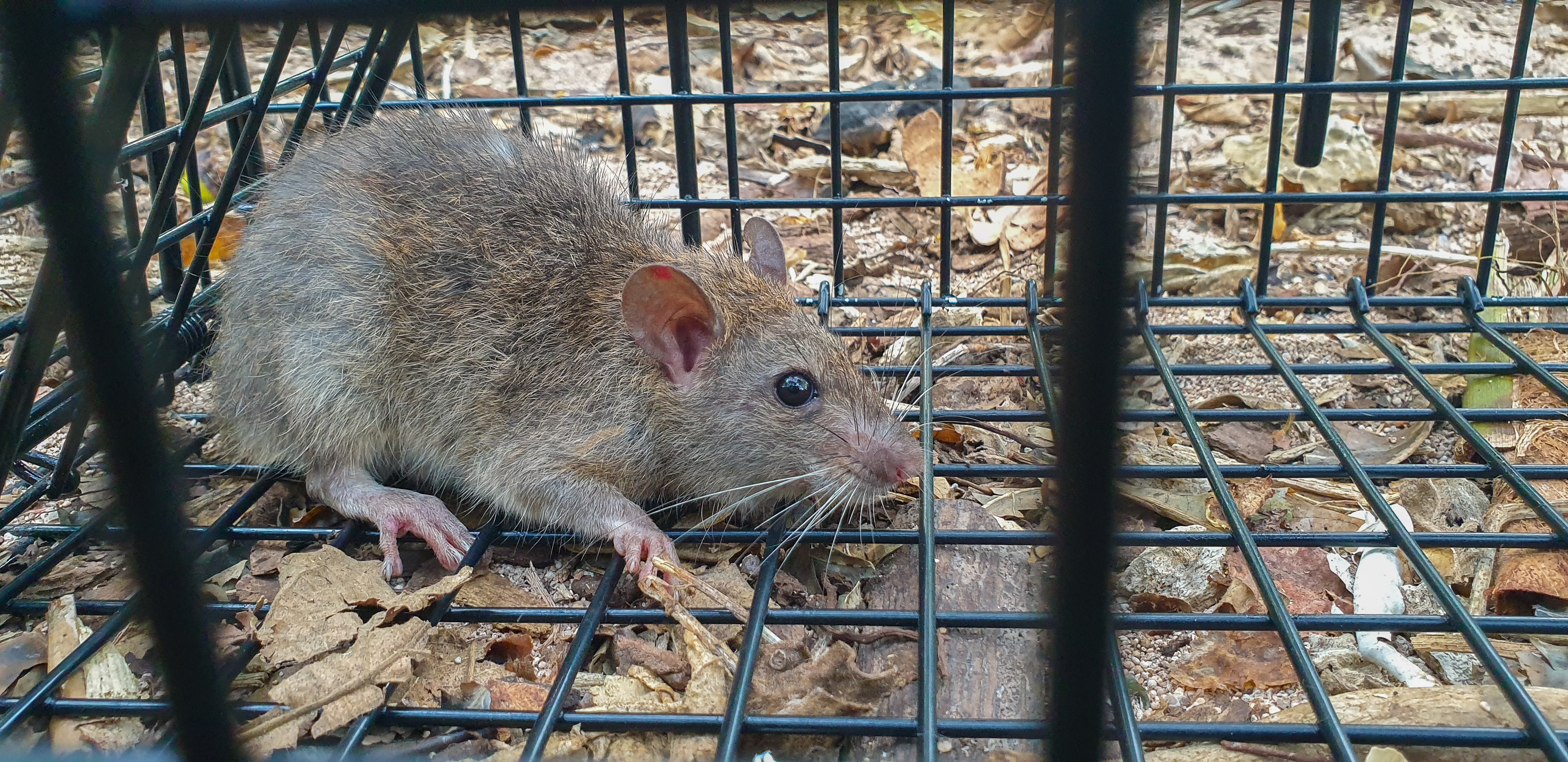
Surveys of rats were conducted before, during, and after the eradication project.
"All of those, one year post-eradication, demonstrated that it worked. We are nearly 100 per cent confident," Mr Hall says, noting follow-up surveys will need to confirm no rats survived undetected.
With rats and pigs gone, the final step has been trying to remove monitor lizards.
A final slippery foe
Bennett's long-tailed monitor lizard (Varanus bennetti) and other monitor lizards of the Varanus genus are native to some parts of Micronesia.
In 2020, a group of researchers argued in the Royal Society of Open Science, "it seems likely that they are native" to the Micronesian island of Yap — and potentially also Ulithi atoll, which includes Loosiep.
"Although it remains possible that the Ulithi [monitor lizard] population is a recent introduction, as is believed by local inhabitants," they wrote.
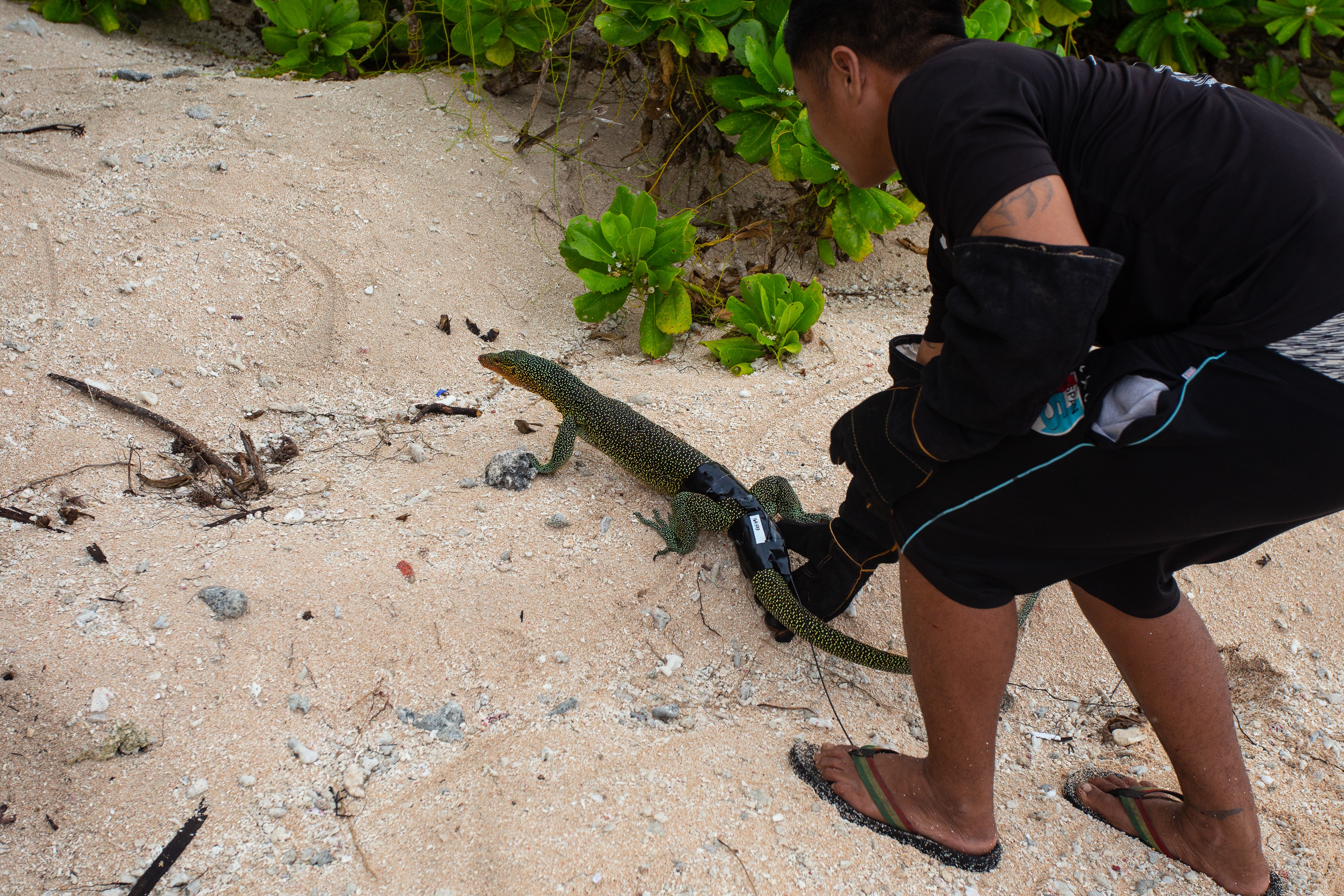
Community members and scientists studied and captured monitor lizards in the early scoping phase of the eradication program.
Jennifer Horeg points out monitor lizards are only found on some islands across Ulithi atoll — and of the five "Turtle Islands", they're only found on Loosiep.
"Yap mainland, they may have been there," she says.
"But for the outer atoll islands, absolutely not. They were brought there."
Among the people of Ulithi, oral histories describe how the lizards were introduced by the Japanese during a period of colonisation between 1920 and 1944 to control rats.
"It was during the Japanese time they threw lizards on Loosiep," John Ugulmar says.
"We wanted to get rid of them, but we didn't know how."
The Royal Society study authors urged caution around eradicating monitor lizards in the region if there was a chance they could be native, "unless conservation of more-seriously threatened species may benefit".
Tommy Hall from Island Conservation says he and other invited scientists in the collaboration communicated the findings from that study to community leaders.
"[We were] saying: this is what the situation is from the scientific community, we want to respect them.
"But more importantly, we want to respect the wishes of the local community."
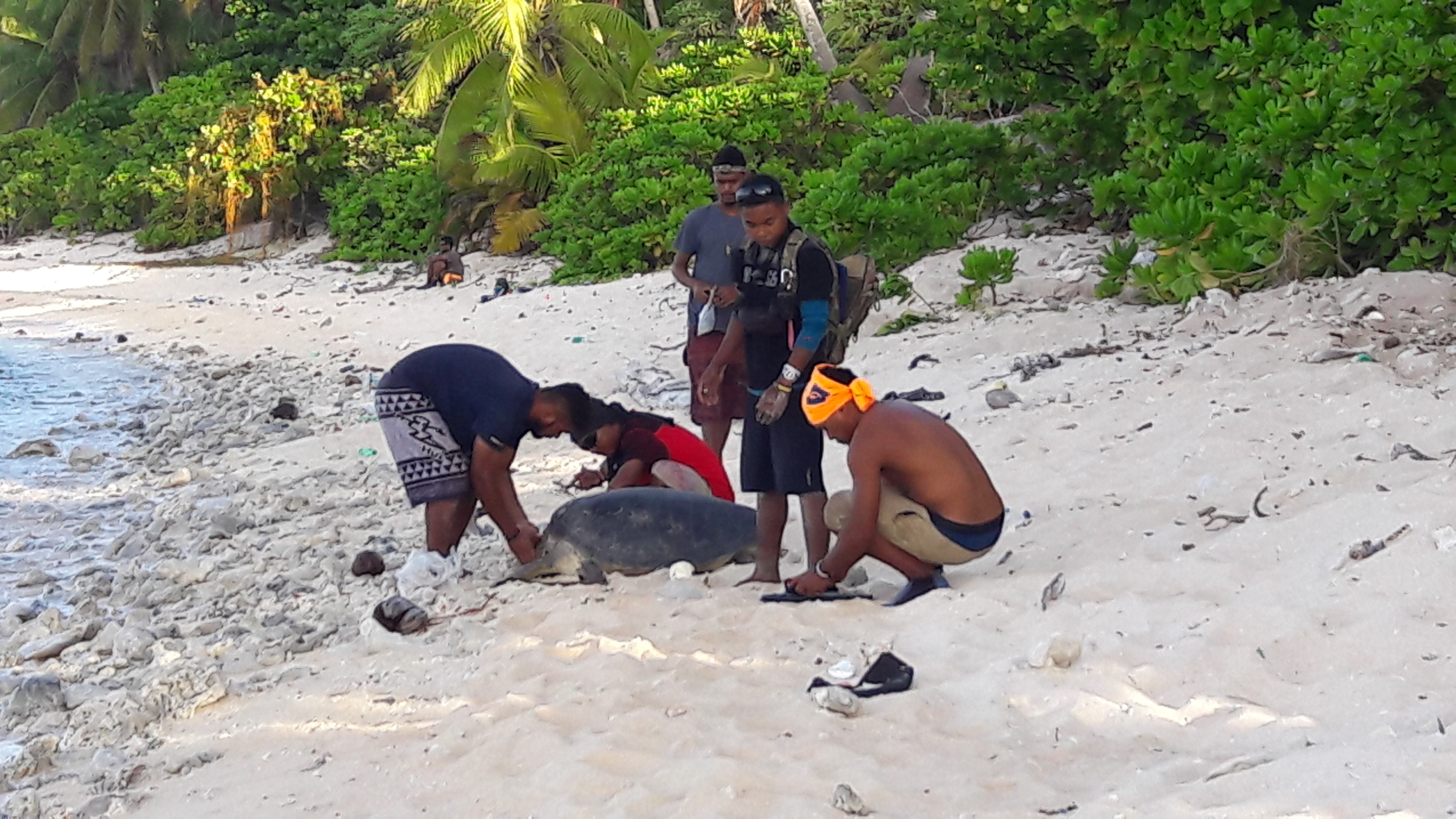
Ulithian community members have helped with turtle tagging, monitoring, and egg counts for decades.
The community-led initiative decided the turtles should be the priority.
"We have to do something to make the turtle population increase again," Ulithi Elder Chief Pedrus says.
A world-first for Loosiep
In 2023, the community embarked on a program to wipe out the lizards from Loosiep — and it's likely a world-first, Mr Hall says.
"As far as I know, there's never been a formal eradication [of monitor lizards from an island]."
But successfully wiping out the lizards would need a new approach, because the trapping and mammal-specific baits used for pig or rat eradications wouldn't do the trick.
Work elsewhere in the Pacific showed acetaminophen — also known as paracetamol — was an effective target-specific poison for other invasive reptiles.
"We've done a bunch of trials, captive trials, and toxicology work to see if this was going to be a feasible approach [for the monitor lizards]," Mr Hall says.
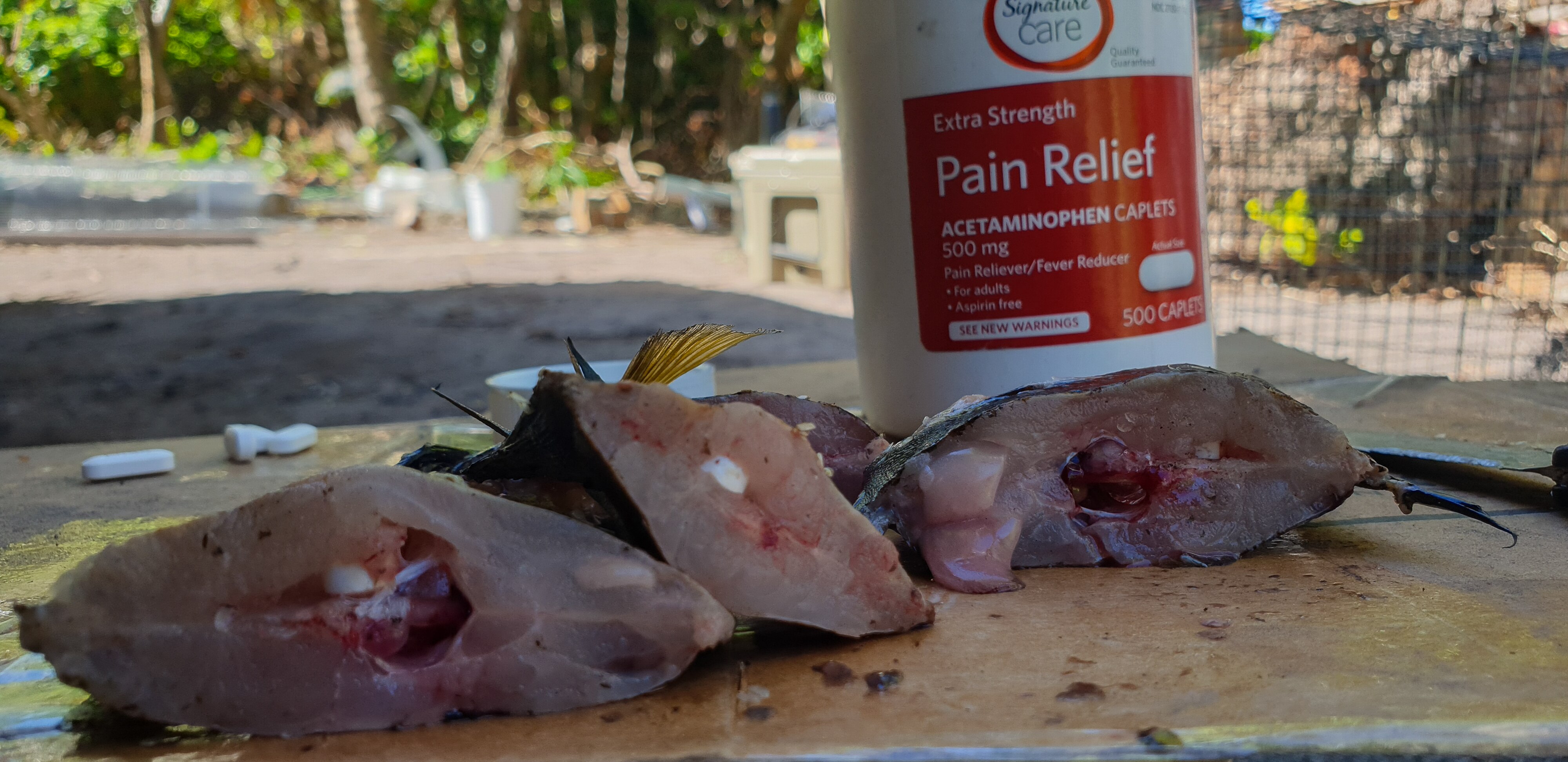
Species-specific drugs were placed inside food that monitor lizards ate, such as fish.
The collaboration was also confident this wouldn't affect other species, given turtles and other species don't eat the lizards, or the baits the drug was distributed in.
Community members distributed several rounds of targeted baits every month.
Just a year after baiting began, most monitor lizards on Loosiep, especially the big ones, were dead.
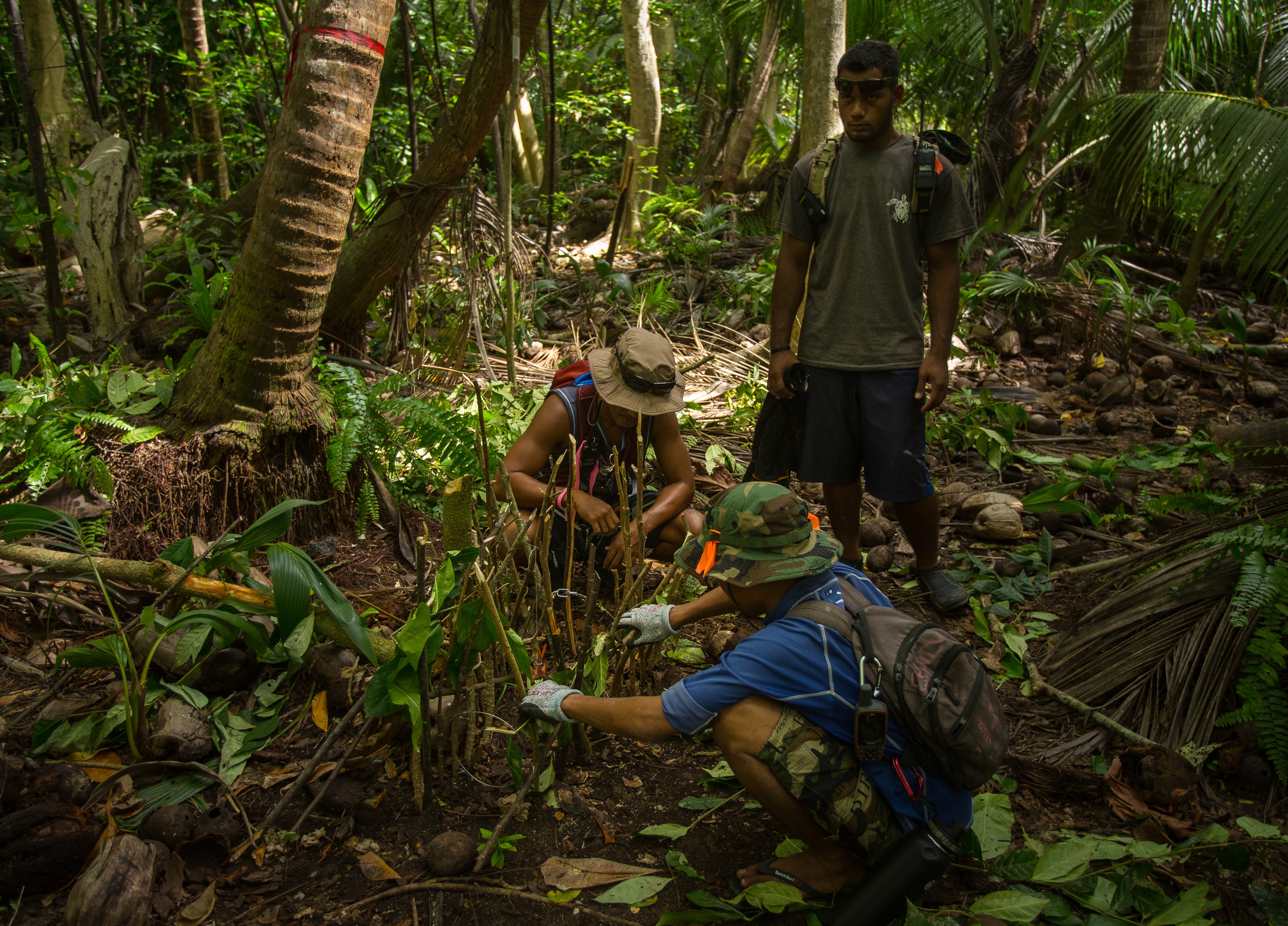
Community members and scientists studied the extent of the pest problem before eradication attempts.
"We're not quite there yet, but we're making great progress," Mr Hall says.
He believes it could take three to five years to catch smaller monitor lizards and complete the eradication.
A rookery restored
Island Conservation and collaborators are also monitoring how eradication efforts, not just of lizards but pigs and rats too, affect the wider ecosystem.
Already, though, people involved with with the project are noticing effects on turtle nests — and other native species like birds and coconut crabs.
"The island is now starting to come alive," Magul Rulmal says.
Jennifer Horeg says now that all of the big lizards are gone from Loosiep, "I don't see any predation on the [turtle] nests".
Traditional descendants of Loosiep people, Milo Tasopulu and John Ugulmar, are also seeing the island recover.
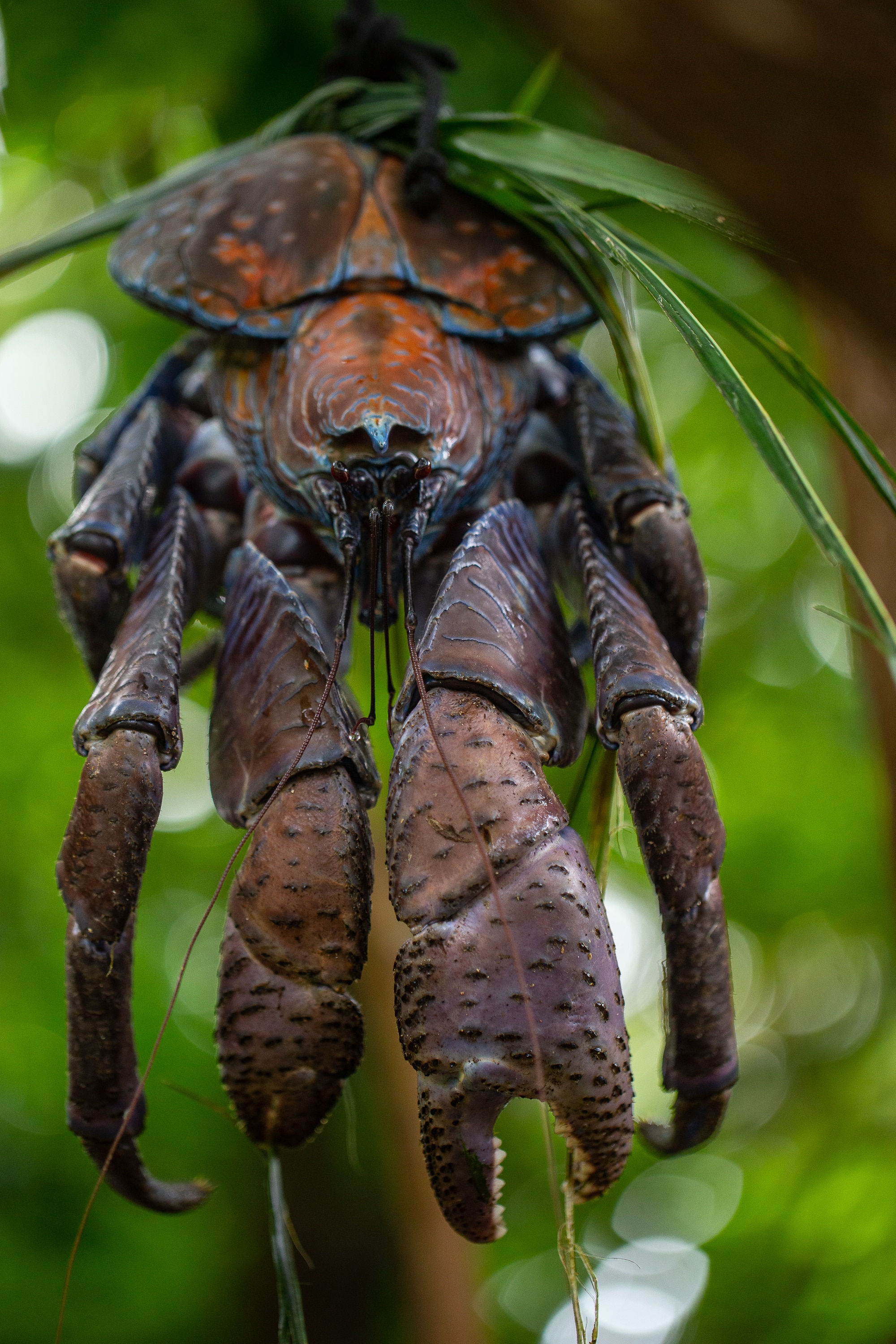
Giant coconut crabs used to be common on Loosiep island but invasive species all but wiped them out.
"You're starting to see birds, you're starting to see fruits," Mr Tasopulu says.
"There are more turtle nests."
Mr Ugulmar says he's happy to see Loosiep being restored for the turtles and his people.
"As a person from that island, I would rather have coconut crabs and more turtles for our food," he says.
He says the process has also encouraged him to think closely about how best to support turtle populations in the atoll.
"I hope that some day we will look into that very seriously — limiting how we kill turtles for food."
This story was made with travel and associated support from the Pulitzer Center as part of its Ocean Reporting Grants and Fellowships Programme.
Science in your inbox
Get all the latest science stories from across the ABC.Your information is being handled in accordance with the ABC Privacy Collection Statement. By:https://www.abc.net.au/news/science/2024-10-19/monitor-lizard-eradication-micronesia-turtle-island-loosiep/104375496(责任编辑:admin)
下一篇:Who is Mohammad Sinwar and could he become the next Hamas leader?
 Socceroos rescue a point
Socceroos rescue a point  Wallabies thrash Wales 52
Wallabies thrash Wales 52 Jake Paul beats Mike Tyso
Jake Paul beats Mike Tyso Live updates: England vs
Live updates: England vs  US election 2024: Donald
US election 2024: Donald  US election live: Kamala
US election live: Kamala
- ·Brazil police formally accuse former pr
- ·Donald Trump's choice for US attor
- ·Japanese state sued in lawsuit seeking
- ·Jury finds MMA star Conor McGregor sexu
- ·Laken Riley's murder became a MAGA
- ·The celebrity look-alike craze is about
- ·Five remaining Bali Nine members could
- ·North Korea's latest weapon agains
- ·Brazil police formally accuse former pres
- ·Donald Trump's choice for US attorne
- ·Japanese state sued in lawsuit seeking to
- ·Jury finds MMA star Conor McGregor sexual
- ·Laken Riley's murder became a MAGA r
- ·The celebrity look-alike craze is about m
- ·Five remaining Bali Nine members could so
- ·North Korea's latest weapon against
- ·Hezbollah says Israel 'cannot impose
- ·Inside the rise of US oligarchs and how i
- ·One of Vietnam's high-profile politi
- ·Shanghai Walmart Attack: A Man Randomly S
- ·South Korean police officers jailed over
- ·Cambodia publicly shames maid deported af
- ·North Korea to use all forces including n
- ·Philippines condemns China attack of Viet
- ·US adds 2 more Chinese companies to Uyghu
- ·North Korean defector steals South Korean
- ·Malaysia deports Cambodian worker for cal
- ·Rebels battle for Myanmar junta’s weste

